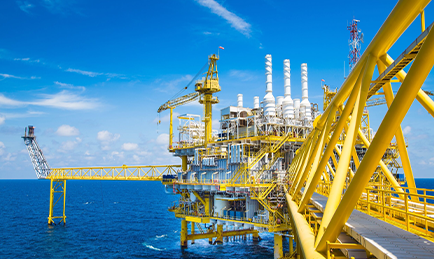- Afrikaans
- Albanian
- Amharic
- Arabic
- Armenian
- Azerbaijani
- Basque
- Belarusian
- Bengali
- Bosnian
- Bulgarian
- Catalan
- Cebuano
- Corsican
- Croatian
- Czech
- Danish
- Dutch
- English
- Esperanto
- Estonian
- Finnish
- French
- Frisian
- Galician
- Georgian
- German
- Greek
- Gujarati
- Haitian Creole
- hausa
- hawaiian
- Hebrew
- Hindi
- Miao
- Hungarian
- Icelandic
- igbo
- Indonesian
- irish
- Italian
- Japanese
- Javanese
- Kannada
- kazakh
- Khmer
- Rwandese
- Korean
- Kurdish
- Kyrgyz
- Lao
- Latin
- Latvian
- Lithuanian
- Luxembourgish
- Macedonian
- Malgashi
- Malay
- Malayalam
- Maltese
- Maori
- Marathi
- Mongolian
- Myanmar
- Nepali
- Norwegian
- Norwegian
- Occitan
- Pashto
- Persian
- Polish
- Portuguese
- Punjabi
- Romanian
- Russian
- Samoan
- Scottish Gaelic
- Serbian
- Sesotho
- Shona
- Sindhi
- Sinhala
- Slovak
- Slovenian
- Somali
- Spanish
- Sundanese
- Swahili
- Swedish
- Tagalog
- Tajik
- Tamil
- Tatar
- Telugu
- Thai
- Turkish
- Turkmen
- Ukrainian
- Urdu
- Uighur
- Uzbek
- Vietnamese
- Welsh
- Bantu
- Yiddish
- Yoruba
- Zulu
Understanding the Different Types of Casing and Tubing Connections in Oil and Gas Industry
Understanding Casing and Tubing Connections in Oil and Gas
Casing and tubing connections are crucial components in the oil and gas industry, serving as vital elements in the construction and maintenance of wells. They ensure the integrity, safety, and efficiency of the drilling process, while also preventing contamination of groundwater resources. This article delves into the significance of casing and tubing connections, their types, and their applications in energy extraction.
The Role of Casing and Tubing
Casing refers to the pipe installed in the wellbore to provide structural integrity and stability. It protects the well from surrounding formations and prevents the collapse of the borehole. The casing also serves to isolate different pressures within the subsurface formations, thus preventing fluid migration between them. On the other hand, tubing is the smaller pipe through which hydrocarbons are produced. It delivers oil or gas from the reservoir to the surface while maintaining well control.
Both casing and tubing must withstand extreme pressures, temperatures, and corrosive environments. Therefore, the selection of materials and the design of connections are paramount to ensure operability and longevity under such conditions.
Types of Casing and Tubing Connections
Casing and tubing connections come in various forms, each suited for specific applications and environments. The most common types include
1. Threaded Connections These are made by cutting threads into the ends of the pipes, allowing them to be screwed together. This connection type is relatively simple and cost-effective, but it may be less reliable under extreme pressures and can be susceptible to thread wear and leakage.
2. Welded Connections In this method, the ends of the pipes are welded together to create a permanent joint. Welded connections offer enhanced strength and integrity, making them suitable for high-pressure applications. However, they require skilled labor and specialized equipment, which can increase costs.
3. Premium Connections These high-performance connections feature advanced designs that provide superior sealing and strength. They are engineered to withstand extreme environments and have become increasingly popular in deepwater and unconventional gas extraction scenarios.
casing and tubing connections

4. Coupled Connections Coupling involves using a separate piece, known as a coupling, to join two lengths of tubing or casing. This method is often employed in situations where the lengths of the pipe must be extended, making it a flexible option for various drilling applications.
Importance of Proper Connection Design
The design of casing and tubing connections is vital to operational success. A poorly designed connection can lead to numerous issues, such as leaks, blowouts, and formation damage. Therefore, engineers must consider factors such as load-bearing capacity, corrosion resistance, and ease of installation when designing these connections.
Advancements in technology have also transformed the way connections are made. The introduction of computer modeling and simulations has enabled engineers to test and analyze the performance of different connection types under various conditions. This data-driven approach facilitates the selection of the most suitable connections for specific applications, thereby enhancing safety and efficiency.
Challenges in Casing and Tubing Connections
Despite the advancements in technology, challenges remain in the design and implementation of casing and tubing connections. Issues such as thread fatigue, corrosion, and mechanical failure can compromise well integrity. Moreover, the push for deeper and more complex drilling projects necessitates innovative solutions to address the increased risks associated with such conditions.
Industry standards and regulations are also a significant factor. Operators must adhere to stringent guidelines governing the materials used, manufacturing standards, and testing protocols for casing and tubing connections. Ongoing research and development aim to enhance these standards, ensuring that operators can reliably extract resources while safeguarding environmental and human safety.
Conclusion
Casing and tubing connections play a pivotal role in the oil and gas industry, providing the essential framework for successful drilling and production operations. As the demand for energy continues to rise, the need for reliable, efficient, and safe casing and tubing solutions becomes increasingly important. By understanding the various types of connections, their applications, and the challenges faced in the field, stakeholders can make informed decisions that promote both operational success and environmental stewardship. Continued advancements in materials and technology will undoubtedly shape the future of casing and tubing connections, allowing the industry to meet the ever-evolving demands of energy production.
-
Tubing Pup Joints: Essential Components for Oil and Gas OperationsNewsJul.10,2025
-
Pup Joints: Essential Components for Reliable Drilling OperationsNewsJul.10,2025
-
Pipe Couplings: Connecting Your World EfficientlyNewsJul.10,2025
-
Mastering Oilfield Operations with Quality Tubing and CasingNewsJul.10,2025
-
High-Quality Casing Couplings for Every NeedNewsJul.10,2025
-
Boost Your Drilling Efficiency with Premium Crossover Tools & Seating NipplesNewsJul.10,2025







